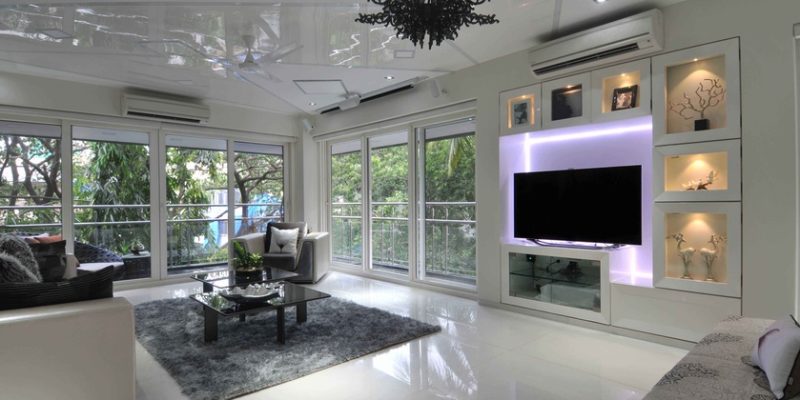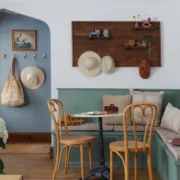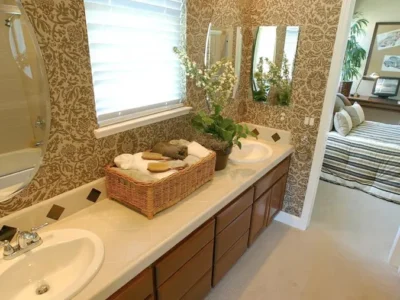Are you gearing up for a home renovation project? Chances are, you have a ton of options and ideas on your to-do list. Not to worry, since you can always achieve your renovation goals with proper preparation. We have rounded up some remodeling and home interior design ideas to guide your next big design project in the sections below.
1. Revamp Your Flooring
Your home’s flooring is one of the key areas to consider when running a home renovation project. The perfect floor type will often depend on the area you are renovating, your budget, and your taste and preferences. Solid flooring options such as hardwood, marble, stone, and tiles are often considered healthier and safer options for most environments.
Hardwood floors are quite versatile and could be refinished several times. They are also strong and durable and are known to increase home value. Tiles, unlike wood, are waterproof and long-lasting but are also cold and slippery, making them unsuitable for some areas. Stone flooring, on the other hand, is elegant and durable but could require a lot of work before installation. Before choosing a flooring type, consult your interior designer for professional advice.
2. Pay Attention to the Walls and Ceiling
Your walls and ceiling cover a significant portion of your home interiors, so you want to be creative when renovating these spaces especially if its about the enclosed patios. The walls and ceilings in your living room, for instance, may need a simple update or a complete makeover, depending on your needs. If repainting the walls or using a new wallpaper will do the trick, you will have inspired a new look without breaking the bank.
However, if you have to remove the ceiling or interior walls, fix cracks, or do other repairs before decorating, you may need to call in an interior designer. The designer will often help you find the best contractor and handle everything on your behalf, from hiring and paying the contractor to supervising the whole project. Afterward, you can discuss the available design options, such as wall art, wallpapers, painting, mirrors, lighting, etc.
3. Replace Your Old Furniture
As part of your home renovation project, you want to update your furniture to match the new look. If you have been using ordinary furniture with the traditional rectangular edges, you can choose to try out something new. Go for spacious L-shape sofas, curved countertops, and even circular tables. Quality is one of the things you should not compromise when buying your new furniture. Wooden furniture is considered the ultimate choice for most spaces, but metal furniture can also be a great pick for areas susceptible to high humidity.
Besides the sofas, chairs, and desks, you can opt to use open shelves to create an extra visual layer to your living room. These shelves can display your tchotchkes, antiques, books, and other valuables that catch your eye. Ensure every piece of furniture you choose falls into place. If the existing furniture is still new or has strong decorative elements, feel free to reuse it. Style Sourcebook helps you visualise how your furniture would look in your newly renovated home.
4. Open Spaces and Versatility
If your budget allows, you can renovate your home to get vast and ample interiors. Choose to extend parts of your living room or kitchen to create a more open and versatile space. You can also replace one side of your solid walls with glass to let in more natural light and allow for great outdoor views. While extending your interiors, ensure you have adapted the spaces for more flexibility. For instance, consider investing in furniture mattresses, foldable chairs, and other versatile accessories that enhance comfort and convenience.
Another consideration is creating space for indoor plants to inspire that healthy, stress-free outdoor feel. Depending on your taste and preference, you can choose small or medium potted plants. Remember, this will work best if enough natural light comes inside your home.
5. Patterns and Colors
Once you have renovated the major parts of your home, proceed to create the perfect vibe by trying different color combinations. The goal is to be conscious and deliberate with the look you want to inspire. Consider using a large contrast of favorite colors if you want a more dramatic feel. Or go for a minimalist design with a cleaner, all-white, or cream color palette.
You can also try a white color scheme with subtle shades of black for that perfect contrast.
Inside your living room, use vibrant colors to create a warm and inviting space. Accent walls, for example, can help add depth, texture, and dimension to your interior spaces. You just want to ensure the ambiance blends well with your final design. Overdoing one room or corner of your home could compromise your overall look.
Conclusion
Whether you are planning a major or minor renovation of your home interiors, always have a schedule on how you will proceed from start to finish. The last thing you want is to begin a home renovation project and get stuck along the way due to design errors or other unforeseen events. A rule of thumb is to work with an expert interior designer who will walk you through the remodeling and design phases, one step at a time.














Comments